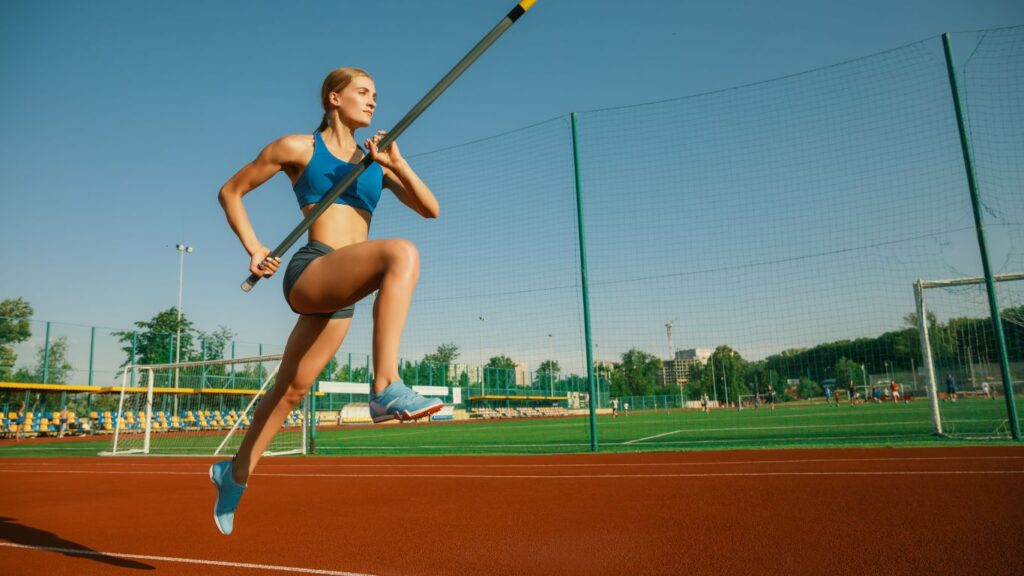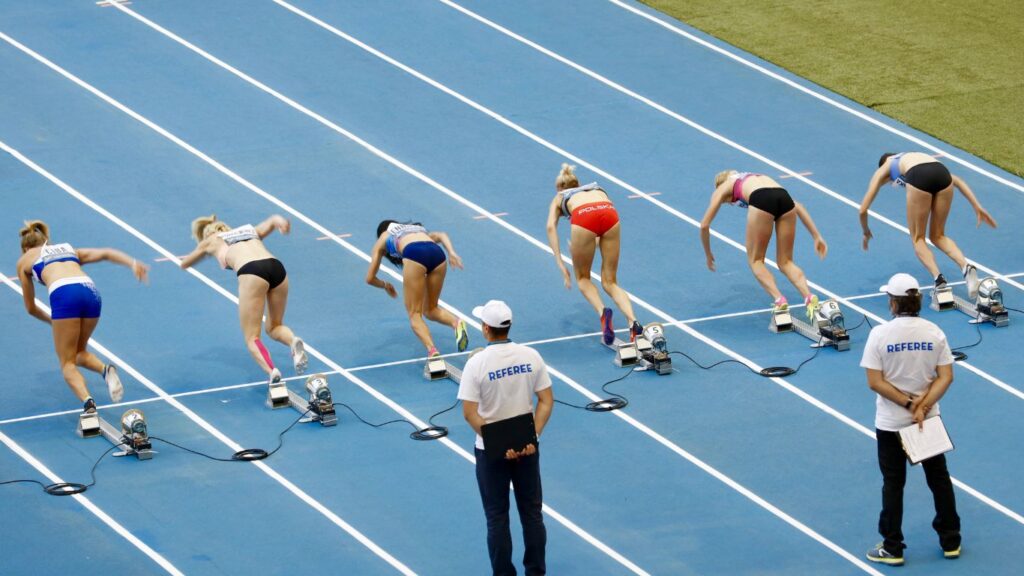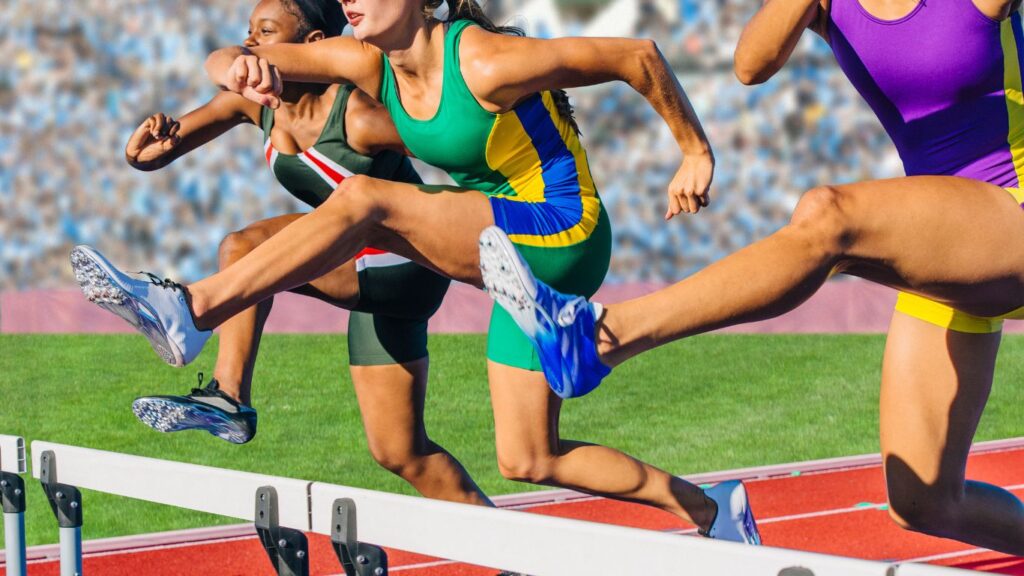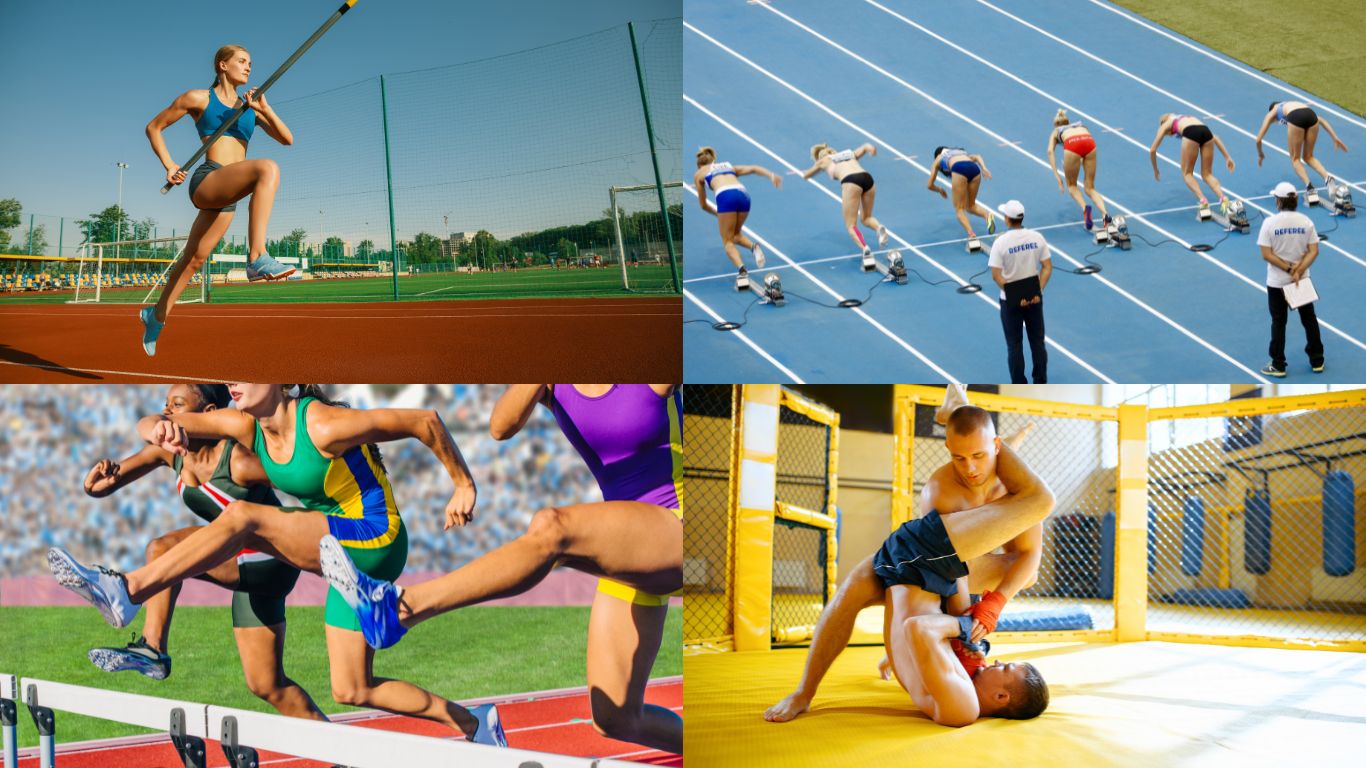Field events are integral to track and field athletics, showcasing athletes’ power, technique, and versatility. Unlike track events, which involve running on a designated track, field events include a range of jumping, throwing, and vaulting competitions. These events test the athletes’ ability to achieve maximum distance or height with precision and skill.
What Are Field Events?
Field events encompass various athletic competitions in a designated area within a stadium or field. These events are divided into two main categories:
- Jumping Events: Competitions involving jumping for height or distance.
- She was throwing Events: Competitions where an object is thrown as far as possible.
Jumping Events

Jumping events require athletes to propel themselves vertically or horizontally, demonstrating explosive power and flawless technique. Key examples include:
- Long Jump: Athletes sprint down a runway and jump as far as possible into a sandpit from a takeoff board. Essential skills include speed, takeoff power, and landing strategy.
- High Jump: Competitors must jump over a horizontal bar set at increasing heights without dislodging it. Proper technique, including the Fosbury Flop, and flexibility play crucial roles.
Throwing Events
Throwing events focus on hurling objects with strength, precision, and technique. Important examples include:
- Shot Put: Athletes “put” (push rather than throw) a heavy metal ball as far as possible. Technique mastery involves proper grip, stance, and release.
- Discus Throw: A disc-shaped object is thrown for distance, requiring rotational technique and strong release mechanics.
Combined Events
Combined events like the decathlon (men) and heptathlon (women) feature a mix of track and field events, testing competitors’ overall athleticism. Athletes earn points in each event, with the highest total determining the winner.
Scoring System
In field events, performance is measured by the distance or height attained. For combined events, a scoring table assigns points based on performance in each discipline, highlighting athletes’ versatility and endurance.
Critical Skills for Field Events

Mastering field events demands a combination of physical and mental attributes:
- Explosive Power: Vital for takeoff and throwing strength.
- Technique Mastery: Precision in execution, from approach to takeoff or release.
- Flexibility and Agility: Essential for dynamic movements and injury prevention.
- Mental Focus and Strategy: Concentration and adaptability to event conditions.
- Strength and Conditioning: Targeted muscle development for event-specific demands.
Training Tips for Aspiring Athletes
To excel in field events, athletes should follow a structured training regimen:
- Explosive Power: Incorporate plyometric exercises like box jumps to enhance strength.
- Technique Practice: Regularly work on event-specific techniques with a coach.
- Flexibility & Agility: Incorporate dynamic stretching and agility drills.
- Mental Training: Focus on concentration, visualization, and pressure management.
- Strength & Conditioning: Tailor workouts to target relevant muscles.
- Video Analysis: Review the form and identify areas for improvement.
- Competitive Experience: Participate in events to apply training and build resilience.
Equipment and Safety
Field events require specific equipment:
- Jumping Events: Takeoff boards, landing pits, high jump bars.
- She was throwing Events: Shot puts, discuses, javelins, and safety cages.
Safety measures are paramount to protect athletes and spectators.
FAQs
Q: What age can you start training for field events?
A: Athletes can start training for field events as early as elementary school. Many programs offer introductory-level training focused on fun and basic skills, gradually progressing to more specialized techniques as the athlete matures.
Q: How important is diet in field events training?
A: Diet plays a crucial role in the training regimen of field athletes. Proper nutrition fuels the body, aids muscle recovery, and enhances overall performance. A balanced diet rich in protein, carbohydrates, and healthy fats, combined with adequate hydration, can significantly impact an athlete’s training outcomes.

Q: What type of footwear is recommended for field events?
A: The type of footwear varies depending on the event. Jumping events typically require shoes with good traction and support, such as spikes designed for sprints and jumps. Throwing events may benefit from footwear designed for rotational movements, providing stability and grip.
Q: How can I prevent injuries during training?
A: Preventing injuries involves proper warm-up routines, using the correct techniques, and incorporating flexibility training. Regular strength and conditioning workouts can reinforce the muscles used in specific events, reducing the risk of strain and other injuries. Always ensure you have appropriate equipment and follow safety guidelines.
Q: Is mental preparation essential for field events?
A: Yes, mental preparation is vital. Success in field events requires physical strength, technique, and mental toughness. Techniques like visualization, mindfulness, and strategic focus can help athletes manage competition pressure and maintain high performance.
Q: Are there opportunities for field athletes at the collegiate or professional level?
A: Absolutely. Many colleges and universities offer track and field programs, with scholarships available for talented athletes. Professional opportunities also exist, including national and international competitions. Success at junior levels can open doors to elite training programs and sponsorships.
Q: How can video analysis benefit my field event performance?
A: Video analysis provides a visual assessment of your technique, allowing you to identify strengths and areas needing improvement. By reviewing footage with a coach, you can make precise adjustments to enhance your performance and prevent technical faults.
Q: What is the best way to recover after a competition?
A: Effective recovery involves active rest, proper nutrition, hydration, and sleep. Techniques such as stretching, foam rolling, and massage can aid in muscle recovery. Listening to your body and allowing adequate rest between intense training sessions and competitions is crucial for maintaining peak performance.
Conclusion
Field events play a crucial role in the world of athletics, showcasing the diverse talents of competitors. These events highlight the dedication and skill of athletes who strive for excellence through soaring jumps or powerful throws. For those looking to refine their capabilities, investing in proper training and understanding the nuances of each event is essential. Start your journey into the exciting world of field events today!










